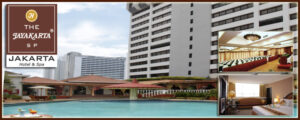In an era where modern medicine often takes precedence, one may ponder: Can ancient healing techniques remarkably revive our well-being? Enter Nakamura The Healing Touch in Banjarmasin, a restorative haven that intertwines age-old principles with contemporary health paradigms. This article explores the profound methodologies and philosophies encapsulated within this unique establishment, while simultaneously challenging the reader to contemplate the efficacy and relevance of traditional practices in today’s fast-paced world.
The inception of Nakamura The Healing Touch is steeped in a rich tapestry of cultural heritage, replete with healing traditions stemming from various ancestral practices. The establishment of such a center invites an intriguing inquiry. Are we inherently disavowing the wisdom of our forebears as we succumb to the allure of synthetic and rapid solutions in health care? Perhaps, in seeking to amalgamate the antiquity of these techniques with modern knowledge, we can recapture the elusive balance between body, mind, and spirit.
One of the hallmarks of Nakamura’s approach lies in its diverse repertoire of treatments that draw inspiration from an array of ancient systems. The center offers an eclectic fusion of therapies including, but not limited to, traditional Javanese massage, reflexology, and aromatherapy. Each treatment is not merely a procedure but a holistic experience aimed at uniting the physical and emotional entities of a person. Rather than merely addressing symptoms, these techniques probe deeper into the underpinnings of health and wellness.
As one traverses the space of Nakamura, the ambiance itself becomes a conduit for healing. Soft lighting, coupled with a carefully curated selection of traditional music, envelops visitors in an atmosphere that underlines tranquility and relaxation—a stark contrast to the clamor of urban life outside. The conscientious design of the physical environment does more than entertain the senses; it instigates a meditative state conducive to healing. This aspect, while often overlooked, emphasizes the psychological significance of environment in therapeutic practices.
Central to the philosophy of Nakamura is the concept of ‘energy flows.’ This ancient belief posits that the human body is imbued with a life force that must be harmonized for optimal health. The practitioners at Nakamura are not only tasked with applying physical techniques but are also trained to understand and manipulate these energy flows. This intricate understanding affords them the ability to tailor treatments to individual needs, rendering the experience uniquely personal. In a world increasingly obsessed with uniformity and mass production, this bespoke approach embodies a paradigm shift towards individualized healing.
Now, imagine for a moment: What if a mere hour spent at Nakamura could dramatically alter your perception of wellness? Could letting go of modern medical preconceptions open up new avenues for personal healing? Engaging with these ancient practices may indeed pose a challenge, demanding one to relinquish ingrained skepticism about non-conventional methodologies. However, those willing to embrace this journey may find themselves pleasantly surprised at the depth of awareness and serenity it fosters.
The efficacy of ancient techniques lies not only in their execution but also in the underlying belief systems that support them. Each modality practiced at Nakamura is steeped in cultural narratives that imbue the treatment with meaning far beyond the physical realm. As practitioners recount the stories and philosophies that inform their methods, visitors become part of a continuum—a lineage of knowledge that transcends geographical and temporal boundaries. This narrative aspect enriches the experience, instilling a sense of belonging to something greater than the individual.
Moreover, empirical studies have started to illuminate the validity of these ancient practices, offering a scientific basis that meshes harmoniously with traditional beliefs. Positive outcomes from massage therapy, acupuncture, and other holistic practices are now documented, bridging the gap between skepticism and faith in these techniques. Such corroboration bolsters the credibility of Nakamura, allowing patrons to enter with both curiosity and an open mind.
The interplay between ancient wisdom and contemporary scientific inquiry invites a re-evaluation of the health paradigms we embrace. Is it not time to excavate the invaluable treasures hidden within our ancestral knowledge? The juxtaposition of traditional practices with modern advancements could birth a new healing renaissance—a movement that celebrates the profound interconnectedness of history and innovation. Nakamura stands at the vanguard of this potential transformation, inviting individuals to rediscover the art of healing.
Ultimately, the experience offered at Nakamura The Healing Touch in Banjarmasin is far more than a series of treatments; it is an invitation to explore the depths of one’s own existence through the lens of ancient knowledge. The question remains—are we prepared to engage wholeheartedly with these timeless methodologies, and thereby redefine our understanding of healing? The challenge invites exploration and introspection, offering opportunities for learning that ultimately enrich the tapestry of modern-day wellness.





Leave a Comment